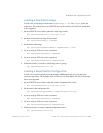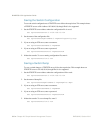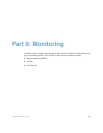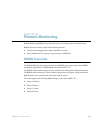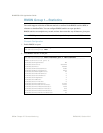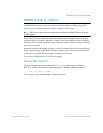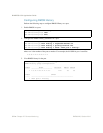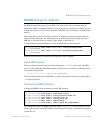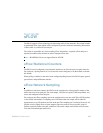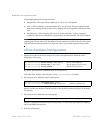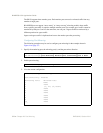
BLADEOS 6.5.2 Application Guide
BMD00220, October 2010 Chapter 27: Remote Monitoring 371
RMON Group 2—History
The RMON History Group allows you to sample and archive Ethernet statistics for a specific
interface during a specific time interval. History sampling is done per port.
Note – RMON port statistics must be enabled for the port before an RMON History Group can
monitor the port.
Data is stored in buckets, which store data gathered during discreet sampling intervals. At each
configured interval, the History index takes a sample of the current Ethernet statistics, and places
them into a bucket. History data buckets reside in dynamic memory. When the switch is re-booted,
the buckets are emptied.
Requested buckets are the number of buckets, or data slots, requested by the user for each History
Group. Granted buckets are the number of buckets granted by the system, based on the amount of
system memory available. The system grants a maximum of 50 buckets.
You can use an SNMP browser to view History samples.
History MIB Object ID
The type of data that can be sampled must be of an ifIndex object type, as described in
RFC 1213 and RFC 1573. The most common data type for the History sample is as follows:
1.3.6.1.2.1.2.2.1.1.<x>
The last digit (x) represents the number of the port to monitor.





